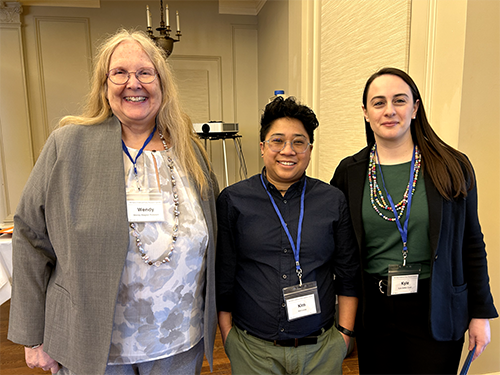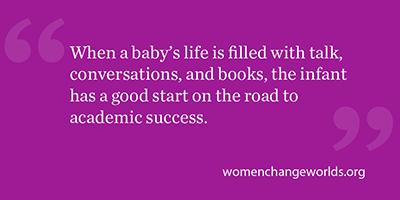 As Massachusetts reels from losing millions of federal research dollars, it’s easy for us as research scientists to lose hope. It’s also easy to believe that with dwindling resources, we live in an even more dog-eat-dog world in which we must fight for the remaining grants and awards. But despite the challenges we are facing, we can choose to see this as a season of possibility—full of potential new ways to carry out our work that involve more collaboration, more partnership, and less competition.
As Massachusetts reels from losing millions of federal research dollars, it’s easy for us as research scientists to lose hope. It’s also easy to believe that with dwindling resources, we live in an even more dog-eat-dog world in which we must fight for the remaining grants and awards. But despite the challenges we are facing, we can choose to see this as a season of possibility—full of potential new ways to carry out our work that involve more collaboration, more partnership, and less competition.Of course, researchers have long worked with colleagues and shared their findings with those in their field. But this particular moment—in which scientific research is under attack from the Trump administration—calls for much deeper collaboration: researchers must come together within, across, and even beyond our fields to determine what the real research questions are, identify whose skills are best suited to answer these questions, and design projects that produce data and information that our communities and policymakers can act upon.
We are ready to meet the moment: We are a group of early childhood policy researchers who are currently developing a statewide early childhood policy research collaborative in Massachusetts. We believe in a broad definition of “researcher”: included in our ranks are traditional academics; research scientists from think tanks; community-based measurement, evaluation, and learning professionals; government analysts; and participatory action practitioners from the field.
We recently held the first Massachusetts Early Childhood Policy Research Summit, at which we, alongside policymakers, advocates, funders, students, and practitioners, committed to working in coordination with each other. Together, we had over 100 participants and filled an entire day with discussion about the role of research, data, design, and collaboration in pushing our field forward. In her opening remarks, Rep. Alice Peisch noted her surprise at just how many researchers of all kinds want to work toward building a more collaborative network across the Commonwealth; those in the room agreed—we even surprised ourselves.
What does a research collaborative mean in practice? It means an annual summit and regular meetings of our leadership team, as well as several working groups focused on specific topics and methods of engaging the field. We decide as a group on our goals, mission, and values, taking into consideration the perspectives of researchers, practitioners, policymakers, and others across the field. We create a website and database of resources to keep our members connected. And, we think collectively about which projects to pursue, consider which of us is best positioned to pursue them, and strategize on how to get it all done and into the hands of those who can take action to support young children, families, and early educators across the Commonwealth of Massachusetts.
We are not the first to pursue this model. Similar early childhood policy research collaboratives exist in New York City, Chicago, New Hampshire and several other cities and states. In addition, the National Network of Education Research-Practice Partnerships (NNERPP) is a professional learning community that supports partnerships between researchers and education agencies in order to improve the relationships between research, policy, and practice. These partnerships are considered “a promising strategy for producing more relevant research, improving the use of research evidence in decision making, and engaging both researchers and practitioners to tackle problems of practice.” We agree that this is a promising strategy. It is far more effective for us to approach policymakers as a collaborative of more than 100 members than it is for us to approach them as individual researchers or even as individual institutions.
Does this kind of collaboration sound too good to be true? Certainly, there are challenges to working collaboratively in this way, especially when you’re forming partnerships across research institutions. People have to be willing to move out of their silos and out of the mindset of competition, which most of us have been in our entire careers as we competed against each other for grants, projects, and awards. Another challenge is simply finding the time to collaborate—to meet with each other, to build trusting relationships, and to work through difficult conversations.
But despite these challenges, we all understand that when funding opportunities are limited—and when the problems we aim to address persist—we can’t waste time and money unnecessarily replicating each other’s work or competing for the benefit of our individual institutions. This summer, we expanded our leadership team and supported a working group to keep up the momentum and ensure that collaboration is built into the design of our work together; we were 25 individuals representing 19 colleges and universities, research firms, government agencies, and direct service organizations. We’re excited to continue our work into next year—and to welcome many more researchers, data analysts, and designers of all walks to our 2026 summit.
In order to continue work that can positively impact children, families, and communities in Massachusetts, we must work together. We are ready.
Wendy Wagner Robeson, Ed.D., is a Senior Research Scientist at the Wellesley Centers for Women. Kimberly Lucas, Ph.D., is Professor of the Practice in Public Policy and Economic Justice in the School of Public Policy and Urban Affairs at Northeastern University. And Kyle DeMeo Cook, Ph.D., is Clinical Assistant Professor at Wheelock College of Education and Human Development at Boston University.




 Friday, September 8, is
Friday, September 8, is  and sharing books begins at birth. Try to read aloud to your baby every day! With the very young infant you may look at only one page of a book- in time, you can look together at two or more. Turning the pages, labeling pictures and describing what is happening on the page all lead to vocabulary and grammar development. Reading to your baby also predicts their early reading and writing skills! Cuddling together to read and share books is a very pleasant experience for both the infant and you! These very early enjoyable experiences can lead to a life-long love of reading. When there are plenty of books available, an infant may even try to look at the pictures in books on her/his own. And, remember your local library is a good source of books for your infant.
and sharing books begins at birth. Try to read aloud to your baby every day! With the very young infant you may look at only one page of a book- in time, you can look together at two or more. Turning the pages, labeling pictures and describing what is happening on the page all lead to vocabulary and grammar development. Reading to your baby also predicts their early reading and writing skills! Cuddling together to read and share books is a very pleasant experience for both the infant and you! These very early enjoyable experiences can lead to a life-long love of reading. When there are plenty of books available, an infant may even try to look at the pictures in books on her/his own. And, remember your local library is a good source of books for your infant.